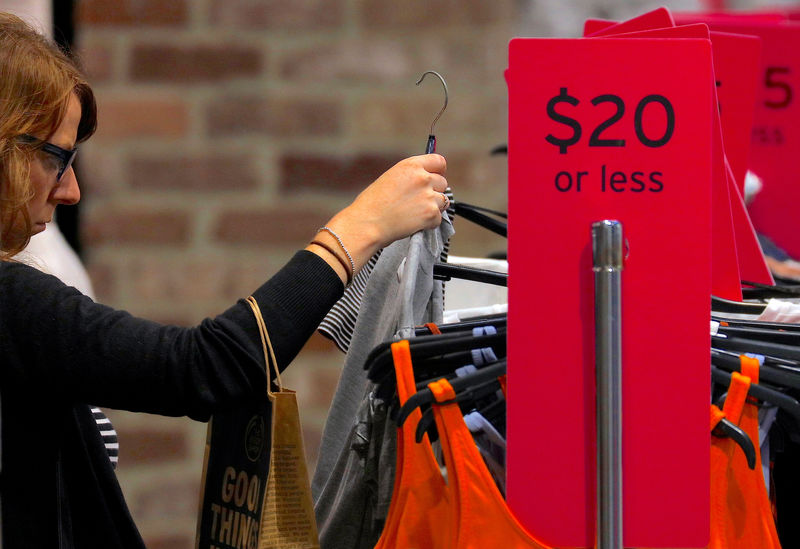 © Reuters. A shopper looks at clothes on sale at a retail store located in a shopping mall in central Sydney, Australia
© Reuters. A shopper looks at clothes on sale at a retail store located in a shopping mall in central Sydney, AustraliaBy Wayne Cole
SYDNEY (Reuters) – Australian’s already anaemic inflation rate looks set to be revised lower as changing spending habits by consumers are taken into account, further pushing out the day when interest rates might rise from record lows.
A five-year update of household spending patterns issued on Monday by the Australian Bureau of Statistics (ABS) implied the consumer price index (CPI) was overstating inflation by around 0.22 percentage points.
That might not sound like much, but annual inflation was already surprisingly low at 1.8 percent in the third quarter and, crucially, short of the Reserve Bank of Australia’s (RBA) target band of 2 percent to 3 percent.
The new weights for the CPI suggested inflation was actually only 1.6 percent last quarter.
“It is clear is that the reweighting of the CPI will make it increasingly hard for the RBA to hit its inflation target in the medium term,” said Westpac economist Justin Smirk.
“The Australian economy just does not have the inflationary impulse in the sectors that are inflating to offset the disinflationary pressures that dominate the consumer retailing space.”
That would be a setback for the RBA which had forecast CPI inflation would rise to around 2 percent by the end of this year and increase gradually thereafter.
Investors have already pushed out the timing of any hike in the current 1.5 percent cash rate. The futures market is now not fully pricing in a move until early 2019 , a marked change from a couple of months ago when it was implying a hike by August 2018.
The central bank holds its monthly policy meeting on Tuesday and is considered certain to stay on hold. It may also foreshadow its quarterly policy review due on Friday, which analysts suspect will include a downgrade to the inflation outlook.
“We remain comfortable with our below-consensus CPI outlook, with the reweighting impact seeing both headline and underlying CPI only slowly drift higher in the coming year to 2 percent or slightly above,” said George Tharenou, an economist at UBS.
“This keeps the RBA on hold until the second half of 2018.”
The adjustments follow a re-weighting of the goods and services contained in the CPI to reflect how spending patterns have changed over the past five years.
In particular, consumers over time tend to substitute toward items that have become relatively less expensive, and away from items that have become more expensive.
This substitution effect typically leads to downward revisions in the CPI.
The trend had been highlighted by the central bank just last month. In a speech on uncertainty, RBA Deputy Governor Guy Debelle noted history suggested CPI inflation tended to be overstated by around 0.25 percentage point and policy was set to take account of that.
The RBA has made it clear the next move in rates will likely be upward, but not for some time to come.
It has also resisted pressure for a further easing, fearing a cut would merely stoke a borrowing binge in the housing market that might ultimately turn into a bust.
Fusion Media or anyone involved with Fusion Media will not accept any liability for loss or damage as a result of reliance on the information including data, quotes, charts and buy/sell signals contained within this website. Please be fully informed regarding the risks and costs associated with trading the financial markets, it is one of the riskiest investment forms possible.
Source: Investing.com






























